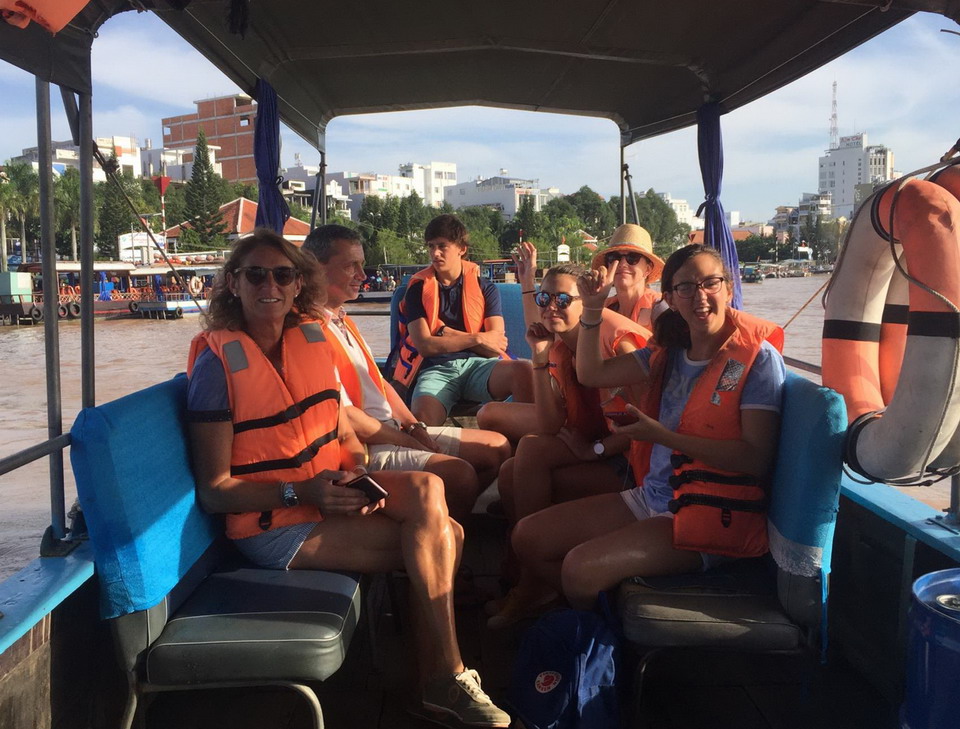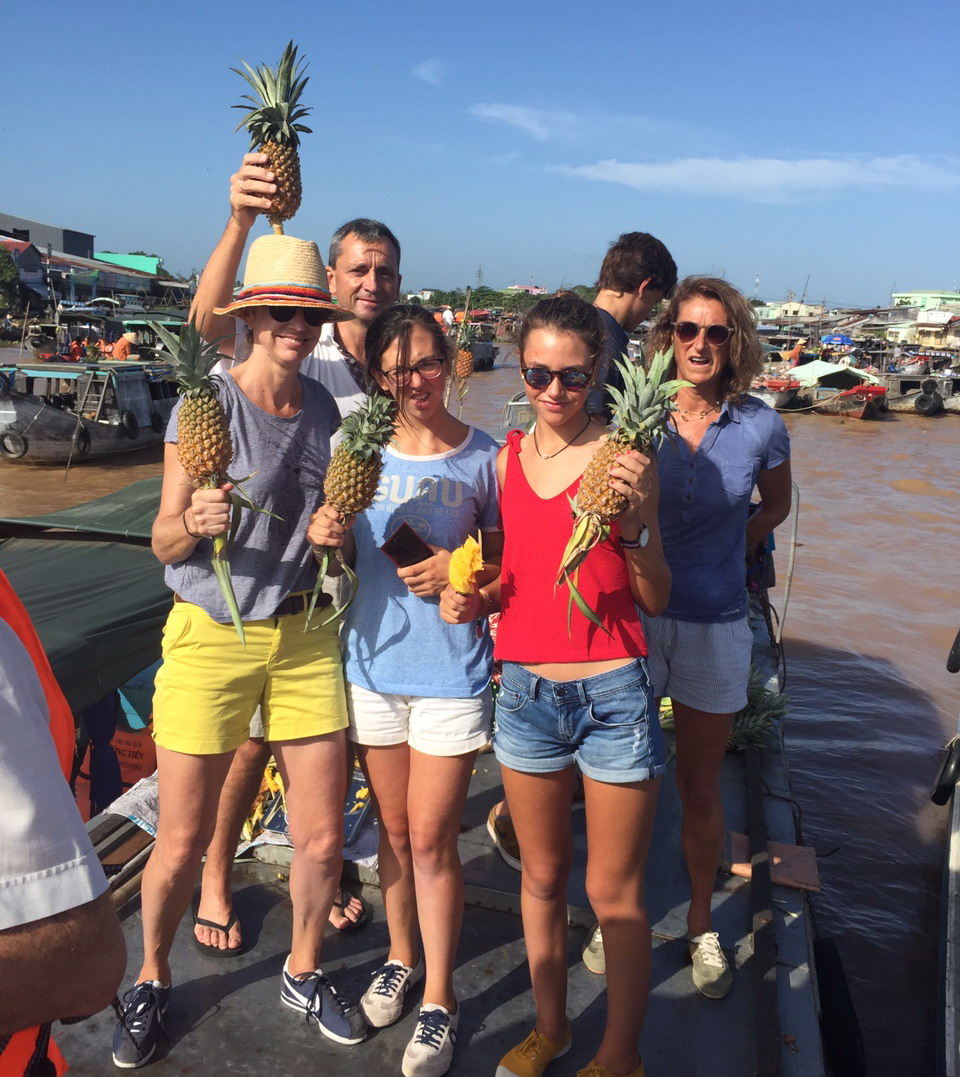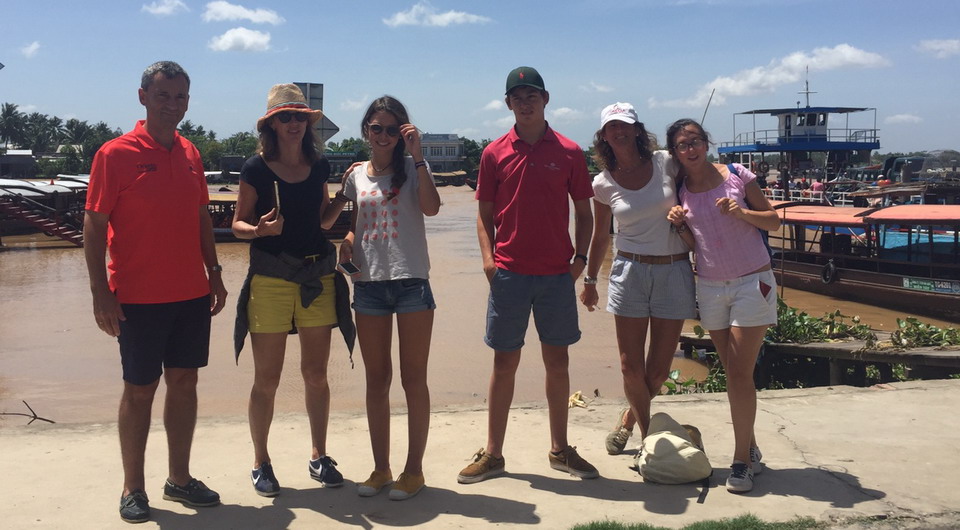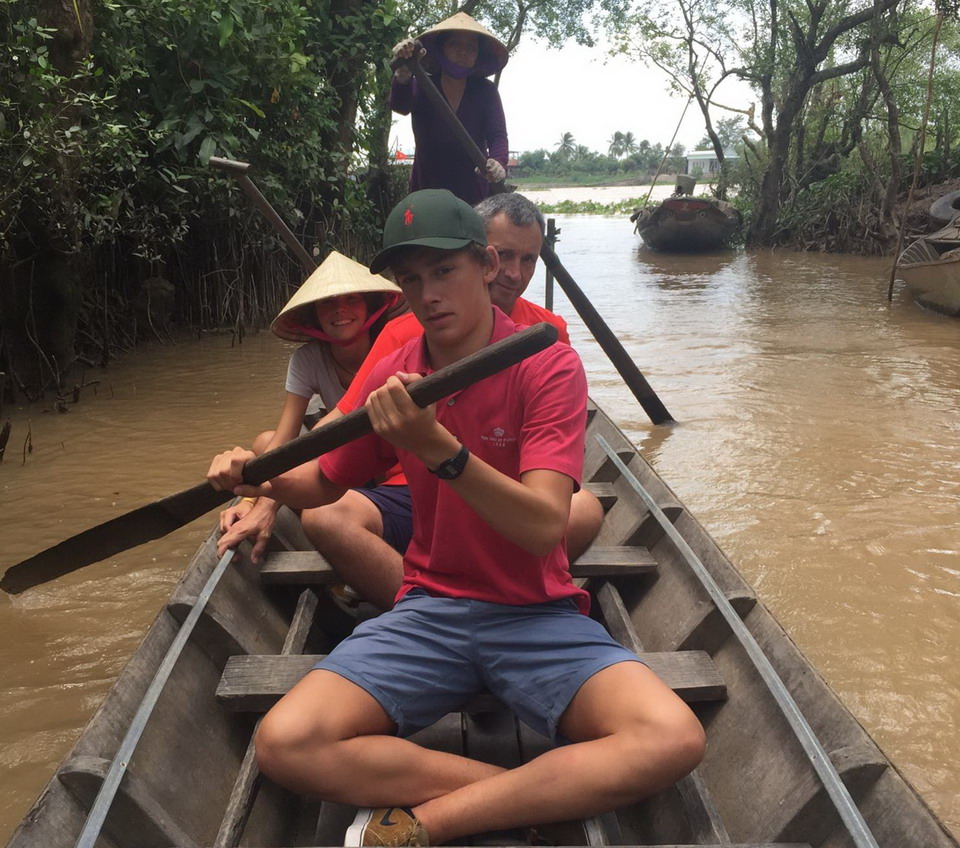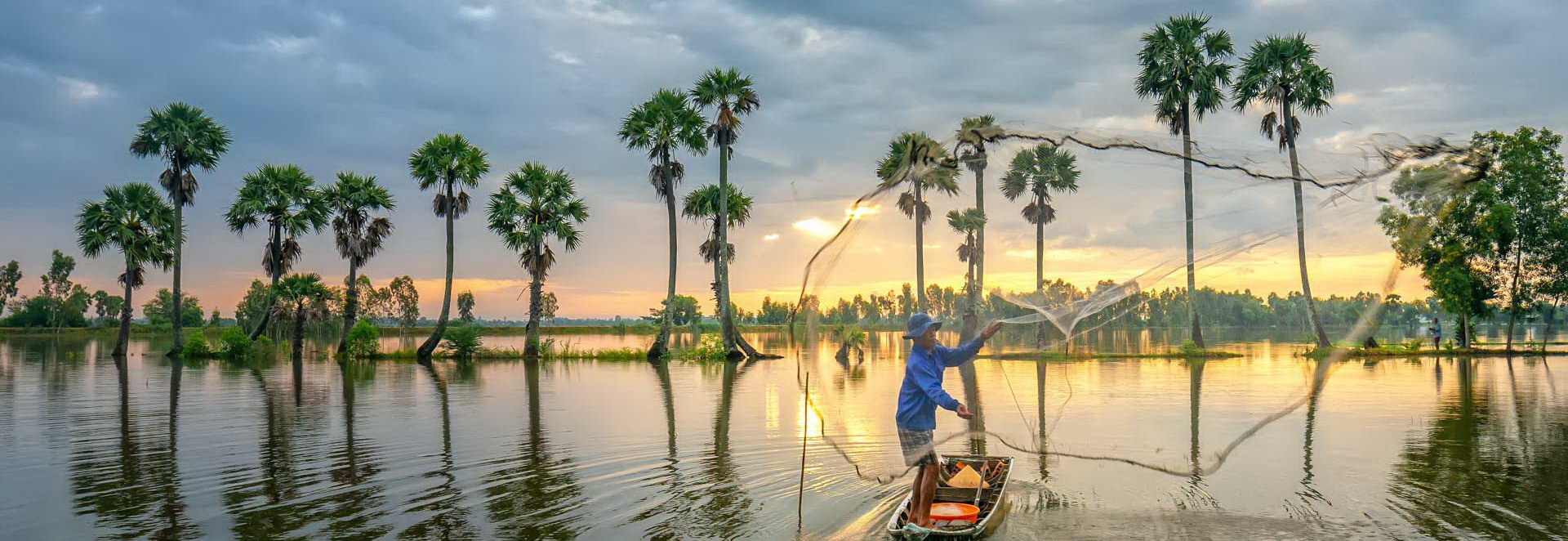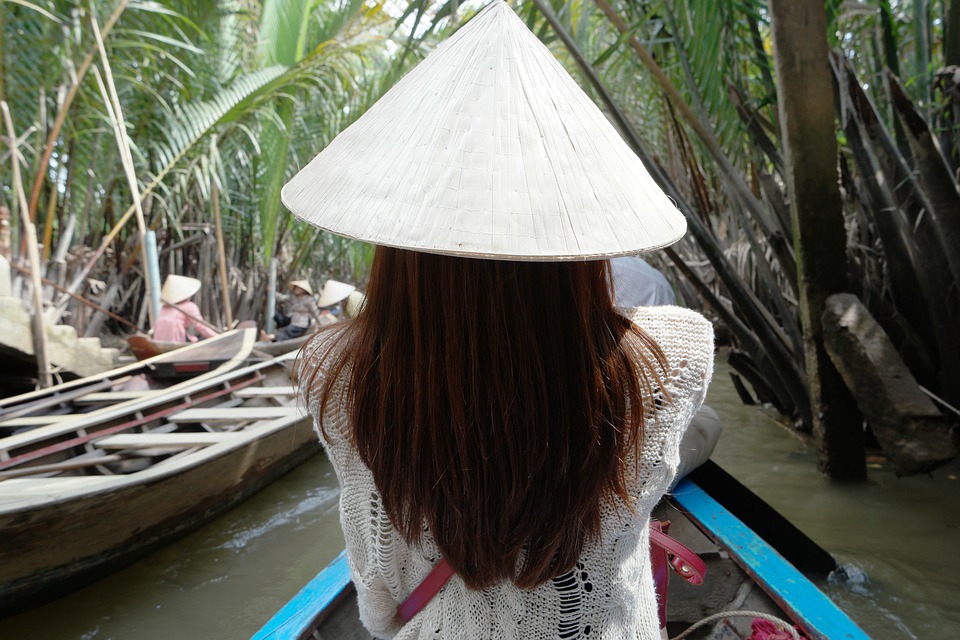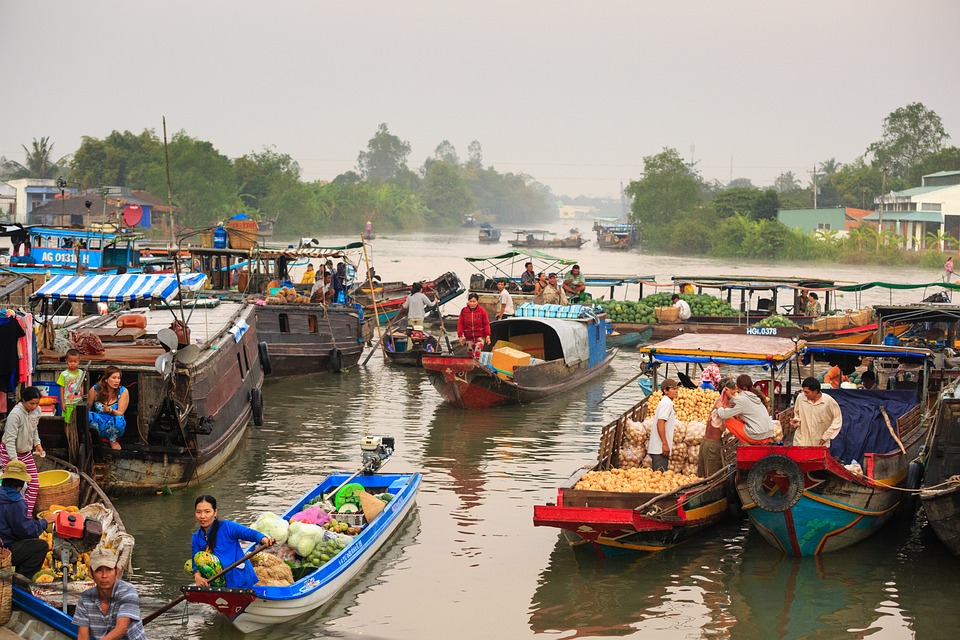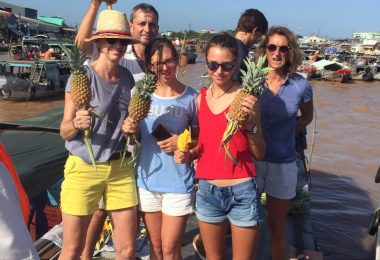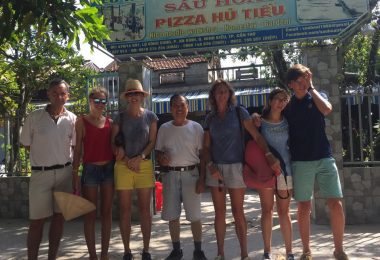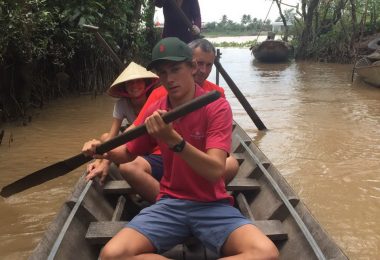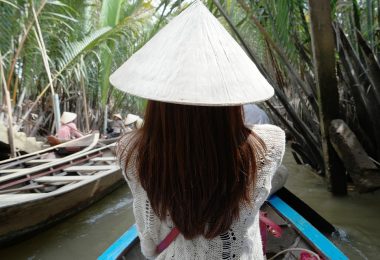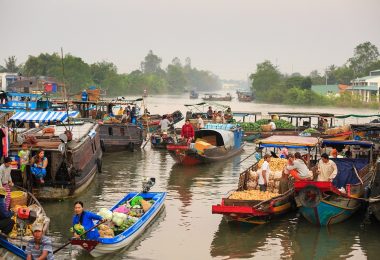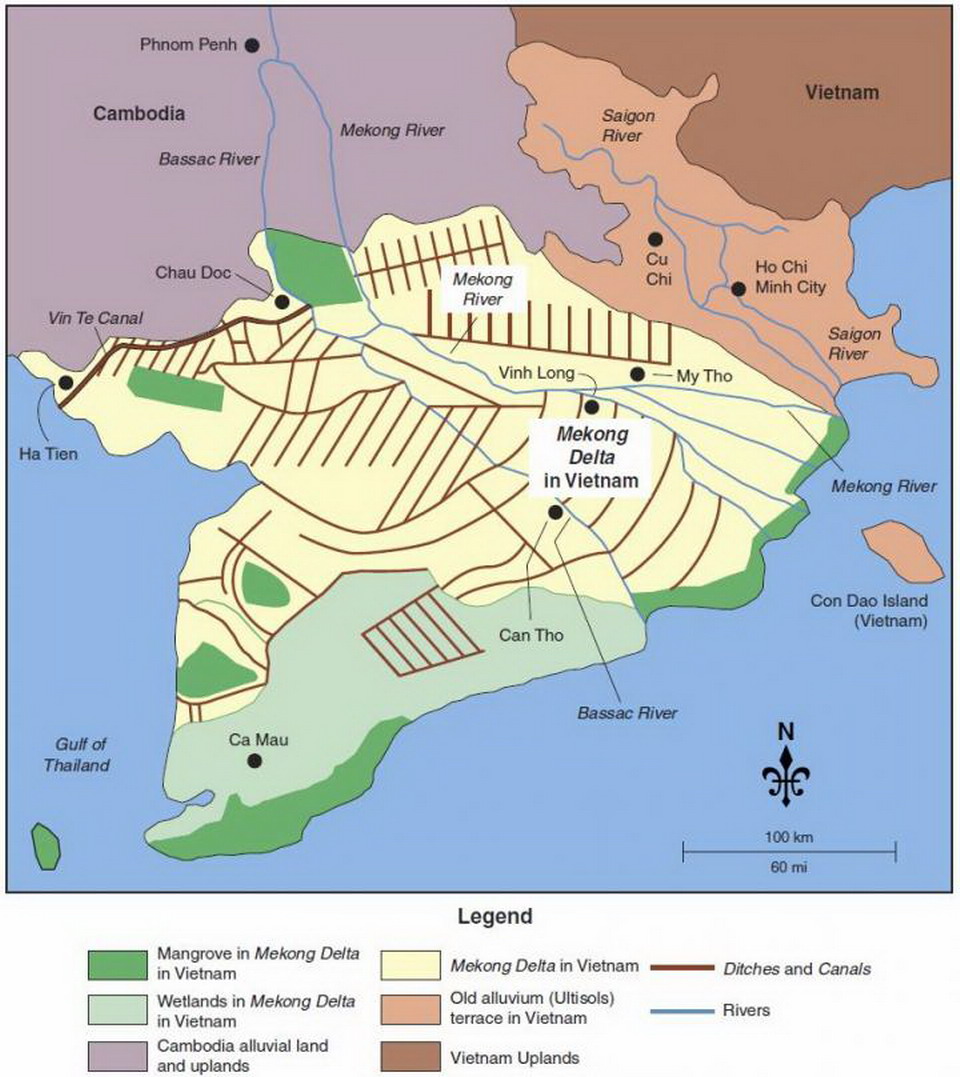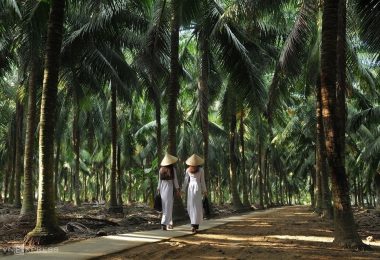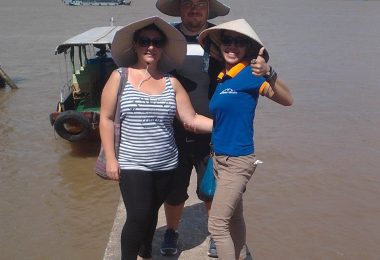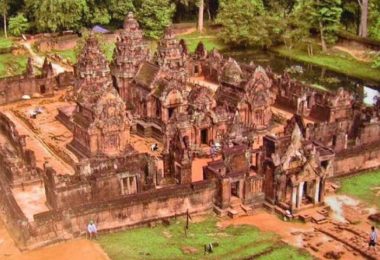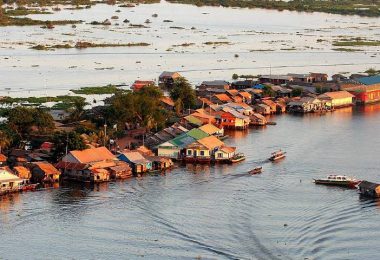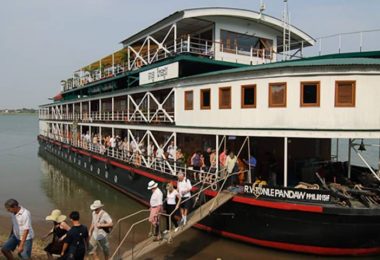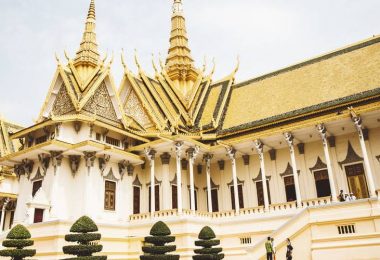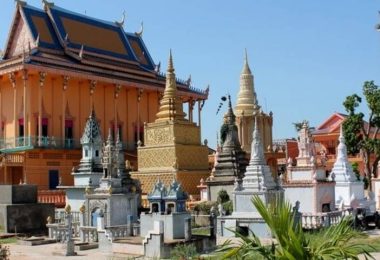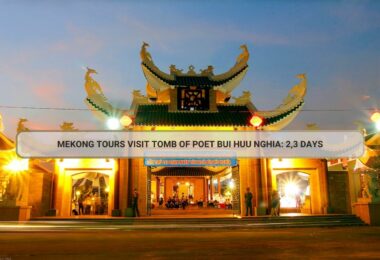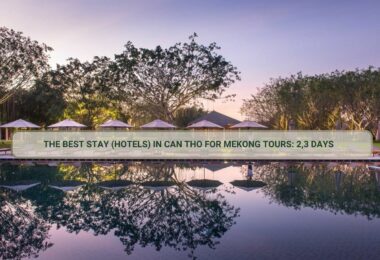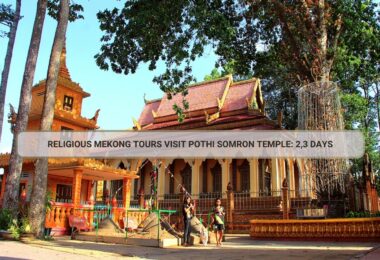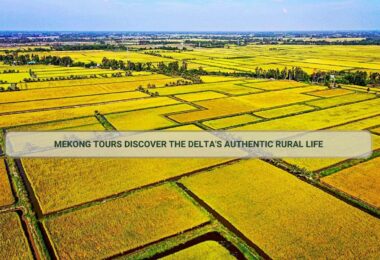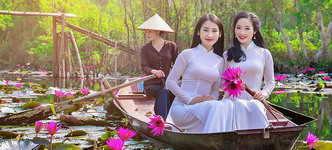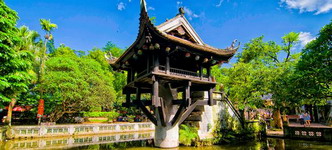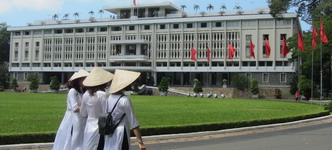One of the largest rivers in Southeast Asia and even the world is the Mekong River, or “Mother of Water." It runs through six countries — China, Myanmar, Laos, Thailand, Cambodia, and Vietnam — throughout nearly 5,000 kilometers, ranking twelfth in the world in length. The river’s immense size and biological diversity provide the support and means of livelihood for the many millions of people that live alongside it; thousands of aquatic species depend on and coexist with one another in the Amazon. The Mekong River is best known for its rich biodiversity, history, prosperity, and the essence of uniquely Asian heritage, providing a lifeline for all that call it home.
Geographic and Hydrological Significance
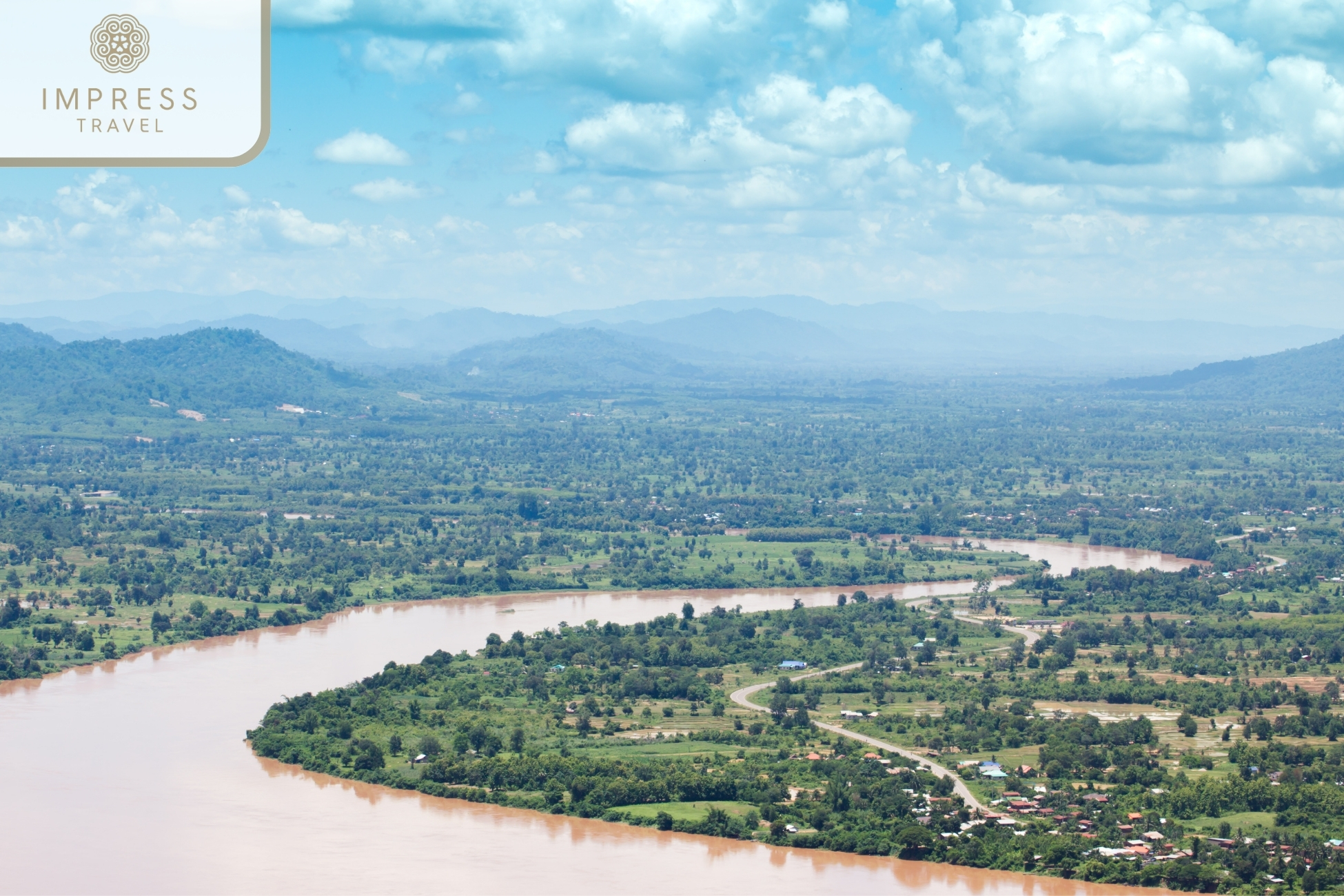
Mekong River seen from above
Originating in the Tibetan Plateau, the Mekong River winds through different terrains before emptying into the South China Sea. Spanning some 795,000 square kilometers, its course runs through highland forests, tropical plateaus, and virgin rain forests and networks of wetlands, rivers, lakes, and soil types cram it full of diverse ecosystems.
Its largest tributary is the Tonle Sap in Cambodia which in the wet season reverses its course into the Mekong, effectively “Doubling" the size of the river, just down from the great lakes it receives its second largest inflow called Nam Ou in Laos. Vietnam’s “rice bowl" surrounds the Mekong Delta, which is one of the most fertile regions of the earth.
From a hydrological point of view, the flow regime of the Mekong River is highly seasonal, with the monsoon season being significantly influenced by the monsoon season, which leads to extensive flow in the first part of the year. Although some of the floods are devastating, they are important to regenerate fertility in the soil and agriculture cycles.
Biodiversity and Ecosystem
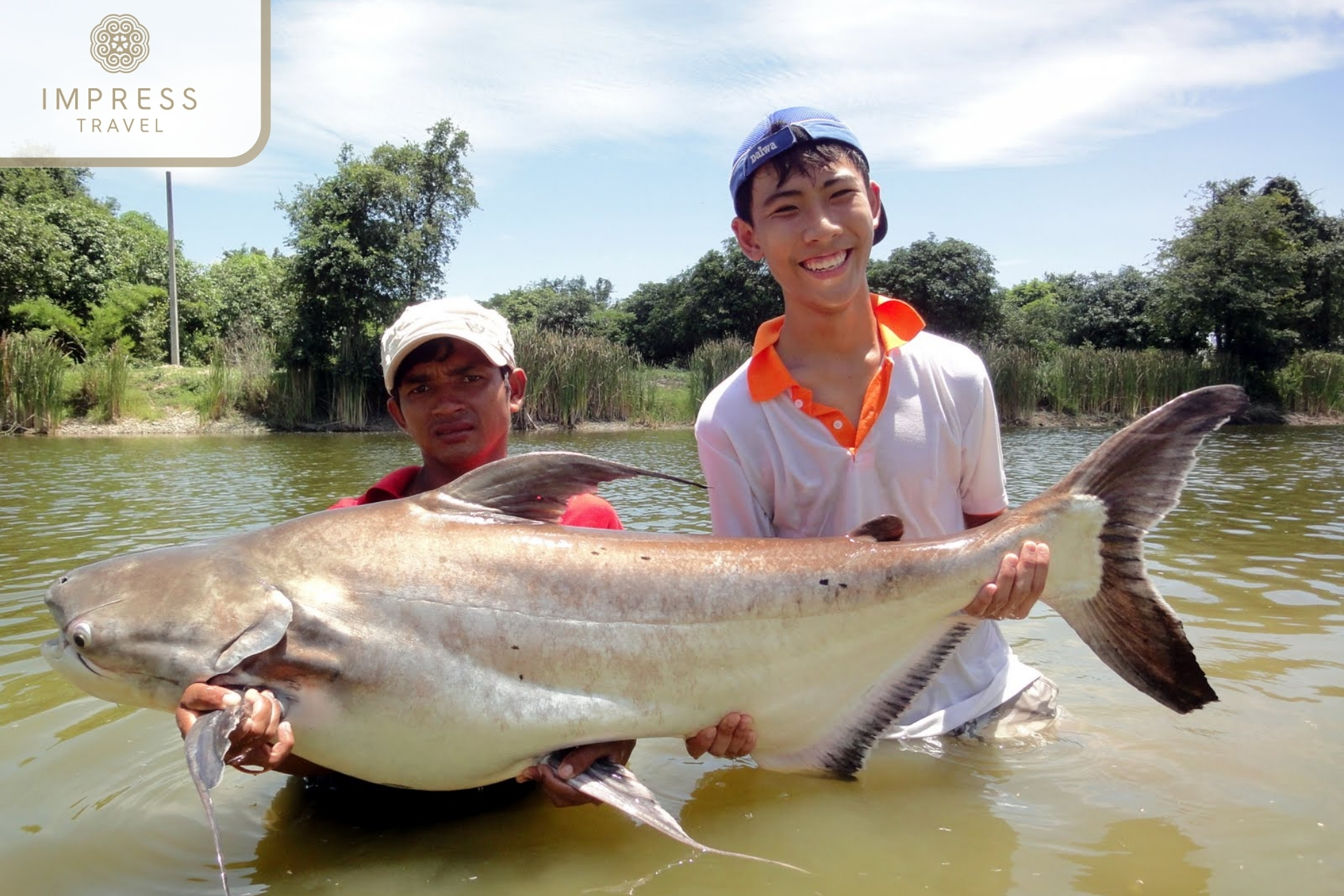
The Mekong Giant Catfish
The Mekong River is best known for its unparalleled biodiversity, Mekong river is the second most biodiverse river ecosystem in the world. It supports a remarkable diversity of plants and animals, including some not found anywhere else.
- The Mekong Giant Catfish is the largest freshwater fish in the world, reaching a length of over 3 meters and exceeding 600 lbs in weight.
- Irrawaddy Dolphin: The Irrawaddy dolphin is a particular kind of dolphin found between Cambodia and Laos, it is easily recognized by its bulging forehead and short beak.
- Siamese Crocodile (Critically endangered): Mekong freshwater species.
- Sarus Crane: these are the tallest birds, with a naked redhead and grey-red legs.
- Giant Ibis – best known for its size and appearance, is also the Cambodian national bird.
- Clouded Leopard: Often referred to as the wild cat species with the distinctive cloud-like marking along the river-dense forests.
The environmental health of the Mekong River is key not only to these creatures’ existence but to untold others. Yet, it is under major conservation threats of habitat loss, pollution, and climate change. Several international and national initiatives are working to safeguard this crucial center of biodiversity.
Cultural and Historical Importance
For thousands of years, the Mekong River has underpinned the cultures and civilizations that have emerged along its banks. Over time, it has influenced the local traditions, festivals, social life practices, and cultural life habits of people in the region.
Vietnam is where you will find the Mekong Delta and its floating markets, selling everything from fresh fruit and vegetables to durian. These markets like Cai Rang and Cai Be are both trading places and also cultural sites that have attracted many tourists worldwide.
The river has also been critical in the region’s history, being a major means of transportation for goods and communication. Thousands of years before that, the Mekong River was a lifeline for ancient civilizations, such as the Khmer Empire. Today, many cultural festivals exist that create a day to day celebration of the river such as the Ok Om Bok celebration in Vietnam which thanks the Moon for the river water and safety in the skies.
Economic Contributions
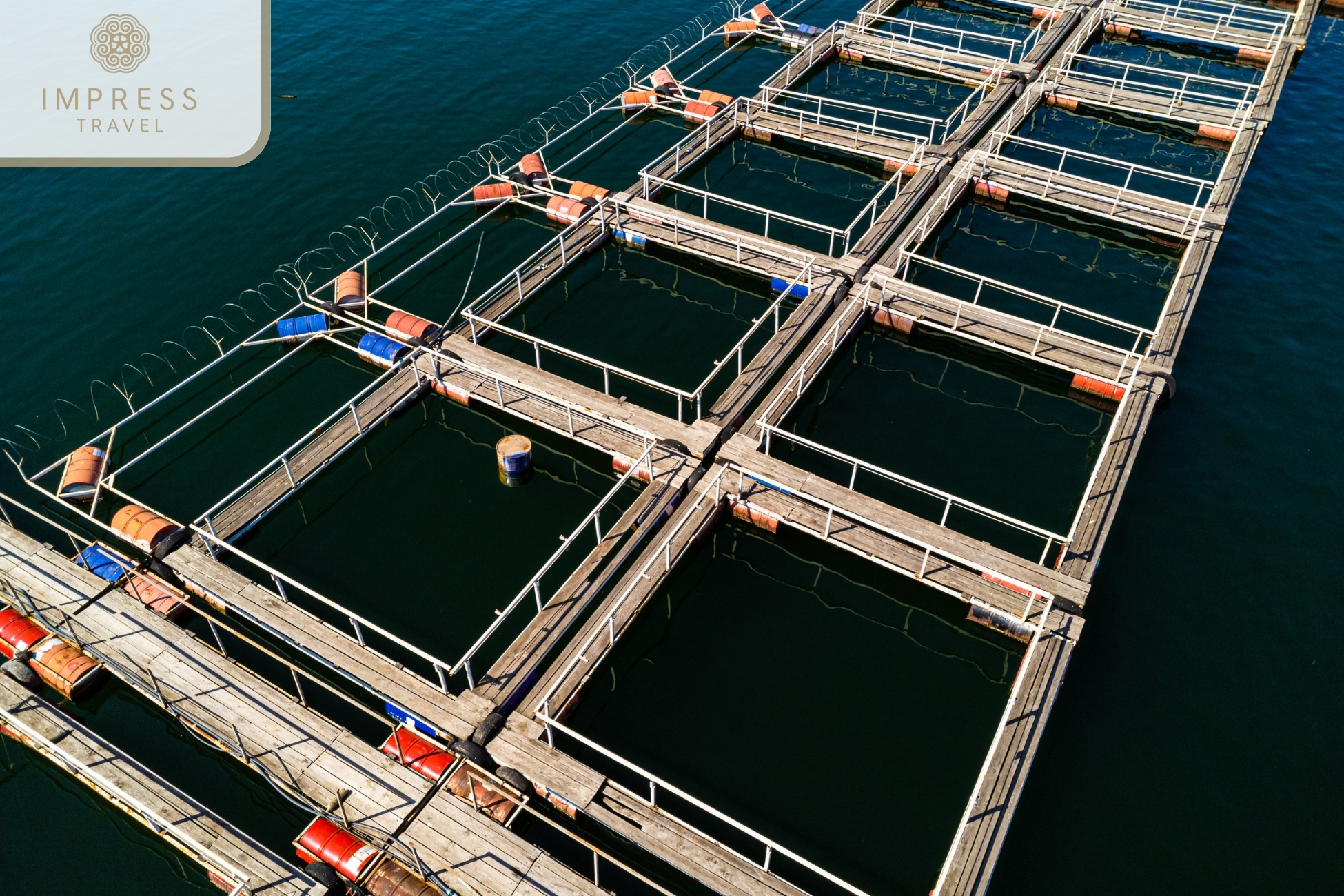
Aquaculture
The Mekong River is primarily known for its major economic role in the region. The River Ganga, as it winds across the plains, is a lifeline for agriculture, and fisheries and a navigation corridor for nearly 60 million people.
- Produce: The annual floods of the river leave nutrient rich silts that make the Mekong one of the most productive agricultural regions of the world. It accounts for more than half of Vietnam’s rice production and is also a major contributor to the growing of a diverse range of crops, including fruits and vegetables.
- Fisheries: The Mekong Basin has the second largest inland fish production in the world, Fishery in the Mekong River basin is estimated 1-2 million tonnes per year. The river supports the livelihoods of many, and the majority of the population along its banks (up to 80% of Cambodians and Vietnamese) depend directly on it for their daily needs and use it as their home.
- Trade & Transport: Important inland routes for transport trade It connects isolated areas with urban centers and contributes to a deeper commercial and economic integration among the countries of the region.
- Tourism: The Mekong River is a popular travel destination, and travelers can enjoy various activities on the river from floating markets to river cruises and cultural tours. Mekong Tours are great for travelers interested in the scenic and cultural life of the river.
Challenges and Environmental Concerns
Though full of advantages, the Mekong River is suffering many environmental challenges to its sustainable development.
- Water quality and aquatic life: Industrial waste; agricultural runoff; and plastic, particularly, are serious polluting agents.
- Overfishing: Continuous fishing through unsustainable methods has decreased fish stocks, leaving river-dependent communities struggling to survive.
- Dam Constructions: Impact on Ecosystems and Communities Dams built along the river (in particular in China and Laos) interrupt the water and sediment transport downstream harming the ecosystem and the communities.
- Climate Change: Global warming means both increased and decreased temperatures and changes in rainfall patterns which interfere with the normal flow and flood cycles of the river, resulting in greater environmental stresses on the Mekong.
As a result, numerous solutions have been proposed, including international treaties and conservation programs to better manage the river and those who live along its banks.
Famous Destinations and Experiences

Fishermen fishing for seafood
The wonder of the Mekong River lies in that it boasts a wealth of destinations and interesting experiences that attract tourists from all around the world.
- Can Tho: Can Tho is famous for its bustling floating markets and picturesque rural scenery, making it the prime destination for experiencing the Mekong Delta.
- Tra Vinh: With nearly 1/2 of the population Khmer, Tra Vinh is famous for its beautiful pagodas and peaceful nature.
- Ben Tre: Famous for its coconut palms and conical hats and ideal for boat trips and eco-tourism.
- An Giang: Home to the captivating Sam Mountain and many religious temples and pagodas. An Giang is great for people looking for cultural and spiritual experiences.
- Kien Giang: Home to the well-known Phu Quoc Island, with untouched beaches and clear water, night markets
Activities differ along the Mekong, where visitors can spare time cruising among enchanting landscapes, kayaking far from urban areas, snooping around drifting towns, and numerous youthful rest travelers can be discovered investigating the countless social locales []. Mekong brings a marvelous view to us as well as a treasure of local cultural life, so joining Mekong Tours would be a unique way to discover the hidden charm of this river.
Conclusion
In summary, the Mekong River is best known for its ecological values, cultural significance, and economic importance, as well as many special travel experiences over such a long distance. For millions of people, it is still a critical ecological, cultural, and economic lifeline that makes up the natural and cultural heart of Southeast Asia. The tourists can observe the amazing world of the Mekong River with Mekong Tours, and enjoy the perfect synthesis of nature and humanity living in this mighty river.Don’t forget to regularly follow our Fanpage for more interesting information about traveling Mekong to and to book Mekong Tours at the best prices.


































